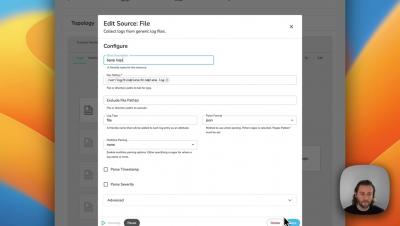Operations | Monitoring | ITSM | DevOps | Cloud
Logging
The latest News and Information on Log Management, Log Analytics and related technologies.
Business Observability: Everything Fintech Companies Want to Know
Fintech companies operate in a complex technological and regulatory environment. They rely heavily on cloud-native technologies and microservices architectures to handle financial transactions and data, often at a massive scale. To maximize application reliability, fintech companies need full visibility into their software systems and applications. An agile monitoring solution like observability is crucial to improving performance and user experience.
The 2023 Observability Market Map - Key Trends, Players, and Directions
Cribl has a unique position right in the middle of the observability market, giving us a distinct view of all things security, APM, and log analysis. Observability as a concept has exploded into specialized areas over the past two years, and making sense of the players and market forces, particularly in a difficult macro environment, can be tricky. Let’s break it down.
Stile Education's Best-of-Breed Observability Strategy
New in Cloud Monitoring: Better tools for analysis, uptime checks, and alerts
We recently launched several new Cloud Monitoring features to improve your visualization and troubleshooting experience.
2022 State of DevOps Report data deep dive: Documentation is like sunshine
The State of DevOps Report finds a clear link between documentation quality and an organization’s ability to meet its performance goals.
Getting Your Logs In Order: A Guide to Normalizing with Graylog
If you work with large amounts of log data, you know how challenging it can be to analyze that data and extract meaningful insights. One way to make log analysis easier is to normalize your log messages. In this post, we’ll explain why log message normalization is important and how to do it in Graylog.
Short Descriptions in BindPlane OP
Top 10 Log Management Tools in 2023
Log Management tools are crucial for the security and performance of your IT infrastructure. With the right log management system, you can quickly detect and respond to any anomaly or performance issue. Presently, there are numerous log management platforms. Each with its own unique set of features and benefits. While most of these platforms offer industry-standard capabilities, what sets them apart from each other are the stand-out features, pricing, and overall user experience.











